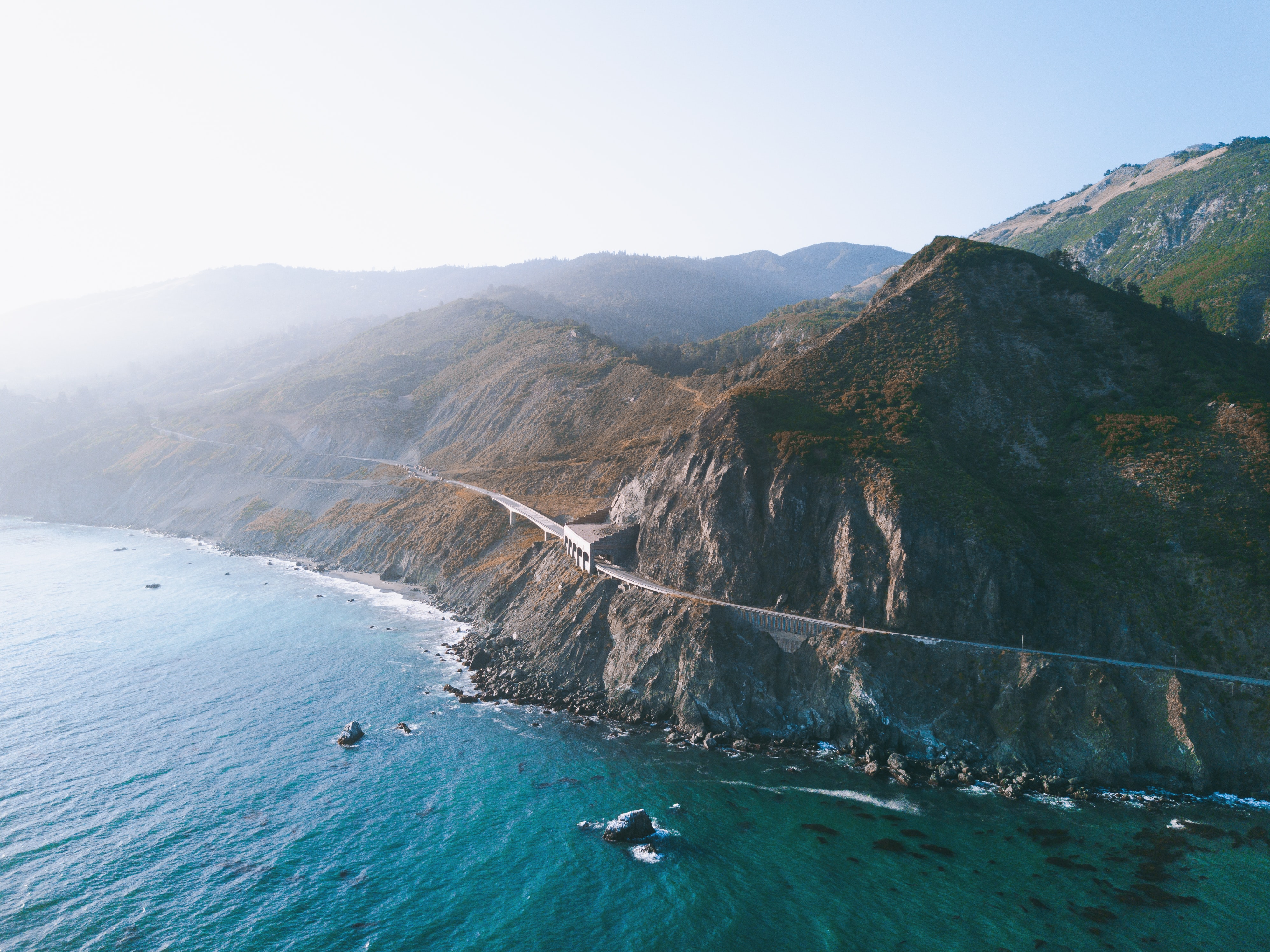Big Sur, California offers a striking intersection of the ocean and land — attracting tourists, hikers, and photographers. Beaches, waterfalls, overlooks, trails, redwood forests, whale watching and scuba diving make Big Sur is a must-visit.
Big Sur, California is located along the edge of a rugged coastline, nestled between the Santa Lucia Mountains and the Pacific Ocean. It offers a unique experience between the redwood groves, natural hot springs, impressive waterfalls, and miles of backcountry trails. The park is 37-miles south of Carmel and 150-miles north of San Francisco. The weather can change substantially, even within a few hours. Park temperatures range from the mid-80s at higher elevations inland to the mid-40s, with heavy winter rains and frequent coastal fog.
One of Big Sur’s main attractions is Julia Pfeiffer Burns State Park. The land was first inhabited in the early 1800s by Native Americans, who used the terrain for hunting and harvesting. In the later 1800s, a number of pioneers settled on the land. The homesteaders were loggers, tanoak harvesters, and ranchers. In 1869, Michael Pfeiffer, father to Julia Pfeiffer, moved to Sycamore Canyon. Julia spent much of her life in Big Sur. Once older, she would often lease pasture land at Saddle Rock, near McWay Falls. The owners of the land enjoyed Julia’s inspiration for the terrain, sea, and wildlife. They donated Saddle Rock Ranch as a state park dedicated to Julia Pfeiffer in 1962.
The park stretches from the Big Sur coastline into 3,000-foot ridges. Situated on the central coast, it is 3,762-acres full of ancient redwood trees, steep canyons, and sheer cliffs that drop nearly vertically to the shoreline. The redwoods grow within 100-yards of the shore, near the southernmost point in California that is able to support this species. The park is between the Ventana Wilderness and the Los Padres National Forest, forming a wildlife corridor preserving 173,000 acres of continuous space for a variety of species and vegetation.
Things to do in Big Sur
McWay Falls - popular attraction in Julia Pfeiffer Burns State Park. It is an 80-foot waterfall that flows year-round, tumbling down a steep granite cliff into a deep cove.
Whale Watching - The entire population of gray whales migrate past the Big Sur coastline twice a year. In late fall, they head south to the lagoons of Mexico. In early spring, they head back to Alaska with their newborn babies. They are medium-sized whales, reaching up to 45-feet in length.
Ewoldsen Trail - this trail is unique because it takes you east of Highway 1, in the opposite direction of the Pacific Ocean. It immediately starts in the old-growth redwood forest. The trail will lead you through lush landscapes, many canyon and ocean views, and quite a bit of elevation gain.
Partington Cove - in the nineteenth century, Partington Cove was used as a loading point for tanbark where it was shuttled through a 60-foot tunnel that pops out into a cove. Today, it was can reached by a quick hike that leads you down a tree-lined canyon and into the tunnel.
Esalen Institute - a non-profit retreat center that focuses on alternative education. Popular workshops include meditation, mindfulness, neuropsychology, and ecology.
Grimes Point Scenic Overlook and Seals Beach Overlook - located just off of Highway 1, these views are quite spectacular. This is the perfect spot to pull over, stretch your legs, and enjoy the scenery.
Nepenthe - great restaurant just off of Highway 1. It has fantastic views of the ocean.

